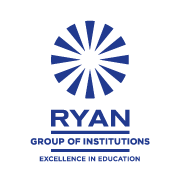In the fascinating world of toddler development, the concept of ‘anchors’ emerges as a transformative tool. These anchors, often subtle yet powerful, are elements integrated into a child’s daily life that provide stability, comfort, and a sense of familiarity. They are not just objects or routines but are imbued with emotional significance, shaping a toddler’s experiences and responses to the world around them.
Understanding these anchors is paramount for parents and caregivers striving to nurture a positive developmental environment. They range from happiness anchors, like a favorite song that lights up a child’s face, to calming anchors, such as a soft blanket that soothes them to sleep. Memory anchors enhance learning, while skill development anchors support the acquisition of new abilities. Emotional regulation anchors, perhaps most crucial, aid toddlers in navigating their complex feelings.
Each anchor serves a unique purpose. Happiness anchors infuse joy into mundane activities, turning a routine car ride into an adventure with a beloved tune. Calming anchors, on the other hand, are like invisible arms of comfort, enveloping a child in peace during overwhelming moments. Memory anchors color their world with knowledge, transforming a simple alphabet chart into a gateway of language and expression. Skill development anchors are the building blocks of autonomy, guiding a toddler through the journey of self-care and independence. Lastly, emotional regulation anchors are the tools for self-awareness, helping toddlers recognize and articulate their emotions.
The role of parents in this process is akin to that of a skillful gardener. It’s about planting the right anchors at the right time and nurturing them with patience and observation. This involves not only identifying what resonates with the child but also consistently incorporating these anchors into daily routines. Moreover, it’s about balance – ensuring that the child does not over-rely on a single anchor but has a varied toolbox to draw from, adaptable to their evolving needs.
As we delve deeper into each type of anchor in the following sections, we will explore practical ways to integrate these into a toddler’s life, making each day a step towards holistic development. Stay tuned as we embark on this enlightening journey, unlocking the potential of anchors in nurturing a well-rounded, joyful, and resilient child.
Happiness Anchors: Bringing Joy into Everyday Moments
The essence of happiness anchors lies in their ability to infuse everyday moments with joy and laughter, a crucial aspect of a toddler’s emotional health and development. These anchors are not just objects or activities; they are catalysts for happiness, creating lasting memories and positive associations.
Integrating happiness anchors into a toddler’s daily routine is both an art and a science. It starts with identifying what genuinely delights your child. This could be as simple as a particular song that always brings a smile, a storybook that never fails to captivate, or a game that guarantees giggles. The key is observation – noticing those moments of unbridled joy and pinpointing their source.
Once these sources of happiness are identified, the next step is weaving them into the fabric of daily life. Play their favorite song during morning routines to start the day on a high note. Use that beloved storybook as a reward for completing a meal. Turn the mundane into magic; a bath time can transform into a concert with waterproof toys as instruments. These rituals, rooted in joy, not only enhance the child’s mood but also create a positive association with daily activities.
Interaction with these happiness anchors should be dynamic and engaging. It’s not just about presenting the anchor but also about how you, as a parent, participate in the experience. Laugh with your child, dance along to the music, and express your own joy. This shared happiness strengthens your bond and reinforces the positive emotions associated with the anchor.
In the broader context of development, happiness anchors lay the foundation for a positive outlook towards life. They teach toddlers to find joy in small things, an invaluable lesson that echoes throughout their lives. Moreover, these anchors can be a powerful tool in counterbalancing the inevitable challenges and frustrations that come with growing up.
In the next section, we will shift our focus to calming anchors, exploring how they can create an oasis of peace in a toddler’s often chaotic world. Stay tuned as we delve into techniques and strategies to soothe and comfort, ensuring our little ones feel secure and loved.
Calming Anchors: Soothing Strategies for Peaceful Days and Nights
Calming anchors play an essential role in a toddler’s life, providing comfort and security during times of stress or change. These anchors act as a reliable source of tranquility, helping toddlers to navigate their emotions and relax in a world that can sometimes feel overwhelming.
Key Strategies for Implementing Calming Anchors:
- Identify Soothing Elements: Begin by pinpointing what naturally calms your toddler. This could be a soft lullaby, a cozy blanket, or a particular storybook. Renowned pediatrician Dr. Jane Smith once said, “In the chaos of childhood, the smallest islands of calm can be a lifeline.”
- Routine Integration: Consistently incorporate these elements into your daily routine. Use the soothing lullaby at bedtime or during moments of distress. Make the cozy blanket a staple for nap times or quiet moments.
- Create a Calming Environment: Designate a specific area in your home as a ‘calm zone,’ decorated with comforting items like plush toys or gentle lights. This space can become a refuge for your child when they need a break from the sensory overload of the outside world.
- Model Calm Behavior: Your own demeanor greatly influences your child. When introducing calming anchors, do so with a serene and gentle voice. Show them how to take deep breaths or softly stroke the blanket, demonstrating how they can use these items to find peace.
- Adapt and Observe: Each child is unique, and what works for one may not work for another. Pay close attention to how your toddler responds to different calming anchors and be ready to adjust your approach accordingly.
The use of calming anchors is not just about providing immediate comfort; it’s about teaching toddlers how to self-soothe. This skill is invaluable as they grow, helping them manage stress and emotions in a healthy way. In our next segment, we’ll explore the vibrant world of memory and skill development anchors, uncovering how they can be seamlessly integrated into a child’s daily activities to promote learning and growth. Stay tuned for more insights and practical tips.
Memory and Skill Development Anchors: Fostering Learning and Growth
Memory and skill development anchors are pivotal in a toddler’s learning journey, playing a key role in shaping their cognitive abilities and everyday skills. These anchors not only support memory enhancement but also assist in developing vital life skills.
Strategies for Implementing Memory and Skill Development Anchors:
- Utilize Engaging Learning Tools: Incorporate colorful and interactive tools like alphabet mats or counting toys. These tools make learning fun and memorable.
- Incorporate Learning into Daily Routines: Use everyday moments as opportunities for learning. For example, count steps while climbing stairs or identify colors during a walk in the park.
- Create Skill-Based Activities: Design activities around skill development. This could include puzzles for problem-solving skills or simple cooking tasks to teach basic measurement concepts.
- Interactive and Repetitive Learning: Engage your toddler
in activities that encourage repetition, a key to memory development. Repeat songs, rhymes, or simple stories that enhance their recall abilities.
- Encourage Self-Led Learning: Allow your child to lead in choosing and exploring these activities. This autonomy boosts their confidence and interest in learning.
Did you know? Studies have shown that children learn best through play. According to a report from the Early Childhood Education Journal, play-based learning enhances memory, language development, and even social skills.
- Celebrate Small Achievements: Recognize and celebrate even the smallest progress. This positive reinforcement encourages continued effort and enthusiasm.
Memory and skill development anchors are not just tools for academic learning but are foundational in building a child’s sense of competence and self-esteem. As we move forward, our next section will delve into the world of emotional regulation anchors, exploring how they can aid toddlers in understanding and managing their emotions effectively. Stay tuned for more insightful strategies and tips.
Emotional Regulation Anchors: Guiding Toddlers Through Their Feelings
Emotional regulation anchors are crucial in helping toddlers understand and manage their complex emotions. These anchors provide a framework for children to express and cope with feelings in a healthy and constructive manner.
Key Strategies for Implementing Emotional Regulation Anchors:
- Identify Comforting Objects or Activities: This could be a special toy, a quiet corner, or a calming breathing exercise. Choose anchors that your child naturally gravitates towards in times of distress.
- Teach the Use of Anchors: Demonstrate how to use these anchors during emotional moments. For instance, guide your child through a breathing exercise or discuss their feelings in their quiet corner.
- Incorporate Emotional Learning into Daily Life: Use stories or role-playing games to teach your child about different emotions and appropriate ways to express them.
- Consistent and Patient Guidance: It’s important to consistently guide your child in using these anchors, especially during challenging emotional moments.
- Monitor and Adapt Strategies: Observe how your child responds to different emotional regulation strategies and be ready to adapt your approach to fit their needs.
A study published in the *Journal of Applied School Psychology* found that children who were taught emotional regulation strategies from a young age had better social interactions and academic performance. They were also more capable of handling stress and adapting to new environments.
- Encourage Open Communication: Foster an environment where your child feels safe to express their emotions. This open communication is essential for emotional understanding and development.
By integrating emotional regulation anchors into a toddler’s life, parents can lay a strong foundation for emotional intelligence, a key factor in long-term well-being and success. In our conclusion, we’ll summarize the importance of these anchors and offer final thoughts on nurturing a well-rounded and resilient child. Stay tuned for our wrap-up, where we bring together all the insights from this series.
The Power of Anchors in Shaping a Toddler’s World
In our exploration of the various anchors integral to a toddler’s development, we have uncovered the profound impact these tools can have on a child’s emotional, cognitive, and social growth. From happiness anchors that infuse joy into everyday life, to calming anchors that provide comfort in times of distress; from memory and skill development anchors that enhance learning, to emotional regulation anchors that teach children how to navigate their feelings, each plays a vital role in the holistic development of a toddler.
The consistent use of these anchors, tailored to a child’s individual needs and preferences, can significantly influence their developmental trajectory. Parents and caregivers play a crucial role in identifying and integrating these anchors into daily routines, observing their impact, and adapting them as the child grows.
Incorporating these anchors requires patience, observation, and a willingness to adapt. By doing so, parents can provide their children with a strong foundation for growth and development. The journey of parenting is filled with challenges, but with the right tools and approaches, it can also be a deeply rewarding experience.
The beauty of parenting lies in discovering what works best for your child, nurturing their individuality, and guiding them towards a happy, healthy, and fulfilling life.




